Digital Camera World Verdict
The Laowa 15mm f/2 Zero-D is a fantastic optic, offering an ultra wide-angle lens with a fast f/2 aperture and an affordable price – making it a bit of a unicorn lens for architectural and landscape photographers. And for videographers, the ability to de-click the aperture by sliding a switch makes this an essential lens for shooting wide. It's an all-manual lens, but the image quality and distortion control are both impressive.
Pros
- +
Fast f/2 aperture
- +
Aperture de-click switch
- +
Remarkable distortion control
Cons
- -
No electronic contacts
- -
Not weather sealed
Why you can trust Digital Camera World
Landscape lenses like the Laowa 15mm f/2 Zero-D don't get the same column inches as their glitzy portrait lens counterparts. However, this rectilinear lens is worthy of plenty of headlines, combining a huge 110° angle of view with a fast aperture that's significantly brighter and cheaper than rival lenses, such as the massive Canon EF 11-24mm F/4L USM.
It's a manual focus lens, and it doesn't have weather sealing or electrical contacts, but it can stand toe-to-toe with its bigger budget counterparts in terms of performance – and it pairs brilliantly with mirrorless cameras.
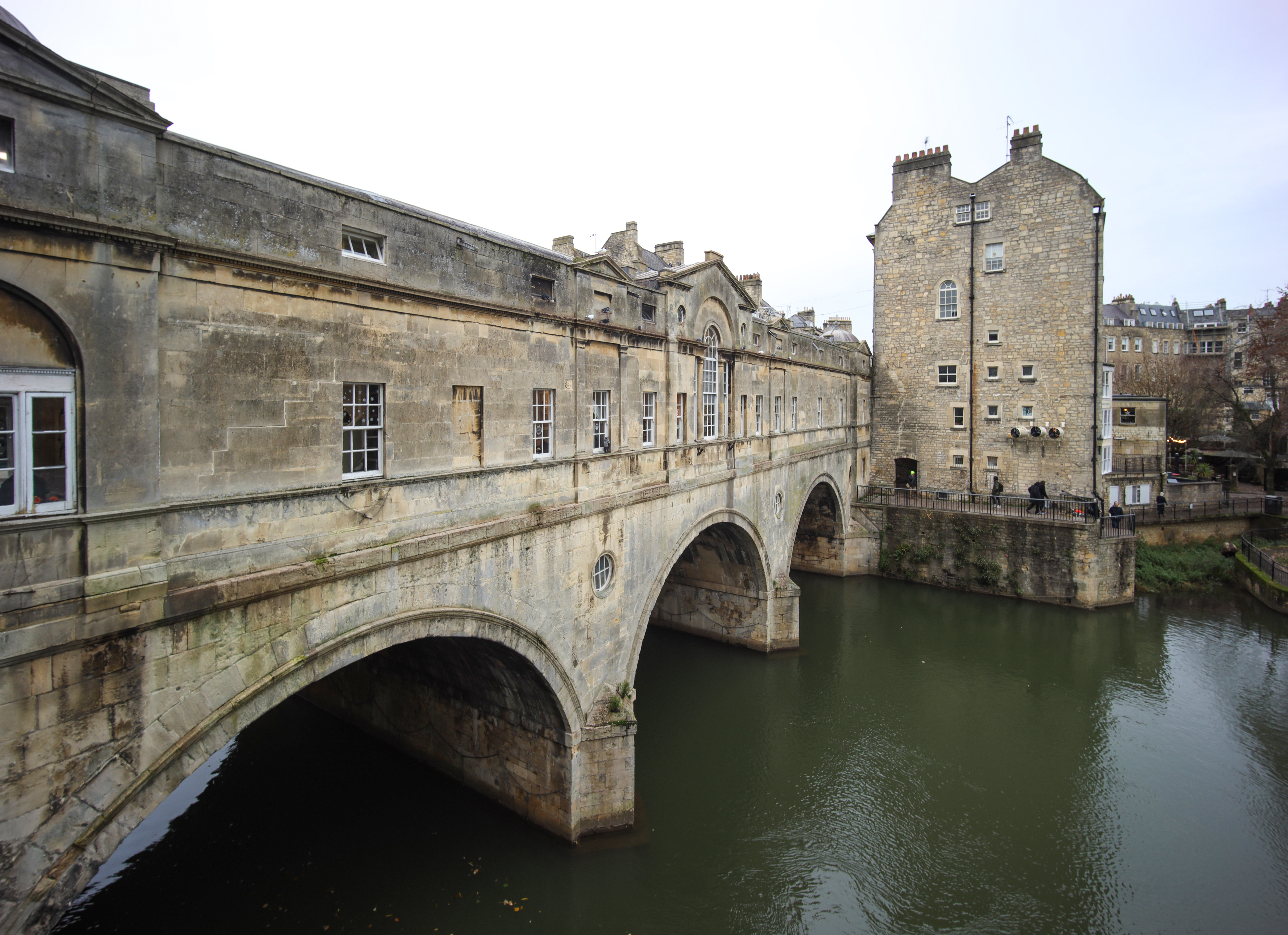
Specifications
Mounts available: Canon RF, Nikon Z, Sony FE, Leica M
Full-frame compatible: Yes
Effective focal length: 15mm
Image stabilizer: No
Minimum focus distance: 0.15m
Manual focus override: N/A (Manual focus only)
Focus limit switches: No
Internal zoom: N/A
Internal focus: Yes
Filter size: 72mm
Iris blades: 7
Weather seals: No
Supplied accessories: Hood
Dimensions: (Dia x Length): 66 x 82mm
Weight: 500g

Key features
The Laowa's party piece is its 110° angle of view and fast f/2 aperture – and this is a combination that opens plenty of doors for architectural, astro, landscape and travel photographers – as well as street shooting.
It also boasts near distortion-free rendering thanks to Laowa's headline Zero-D technology (which stands, no surprise, for 'zero-distortion'). Again, the ability to shoot this wide, at this aperture, with masterfully controlled distortion is an enormous feather in the cap for the lens – particularly for its uses as an architectural photography optic.
It also has a huge upside for video shooters, as a switch on the side of the lens enables you to instantly de-click the aperture ring. Being able to add a lens this wide and this fast to your kit bag makes this a massive win for cinematographers.
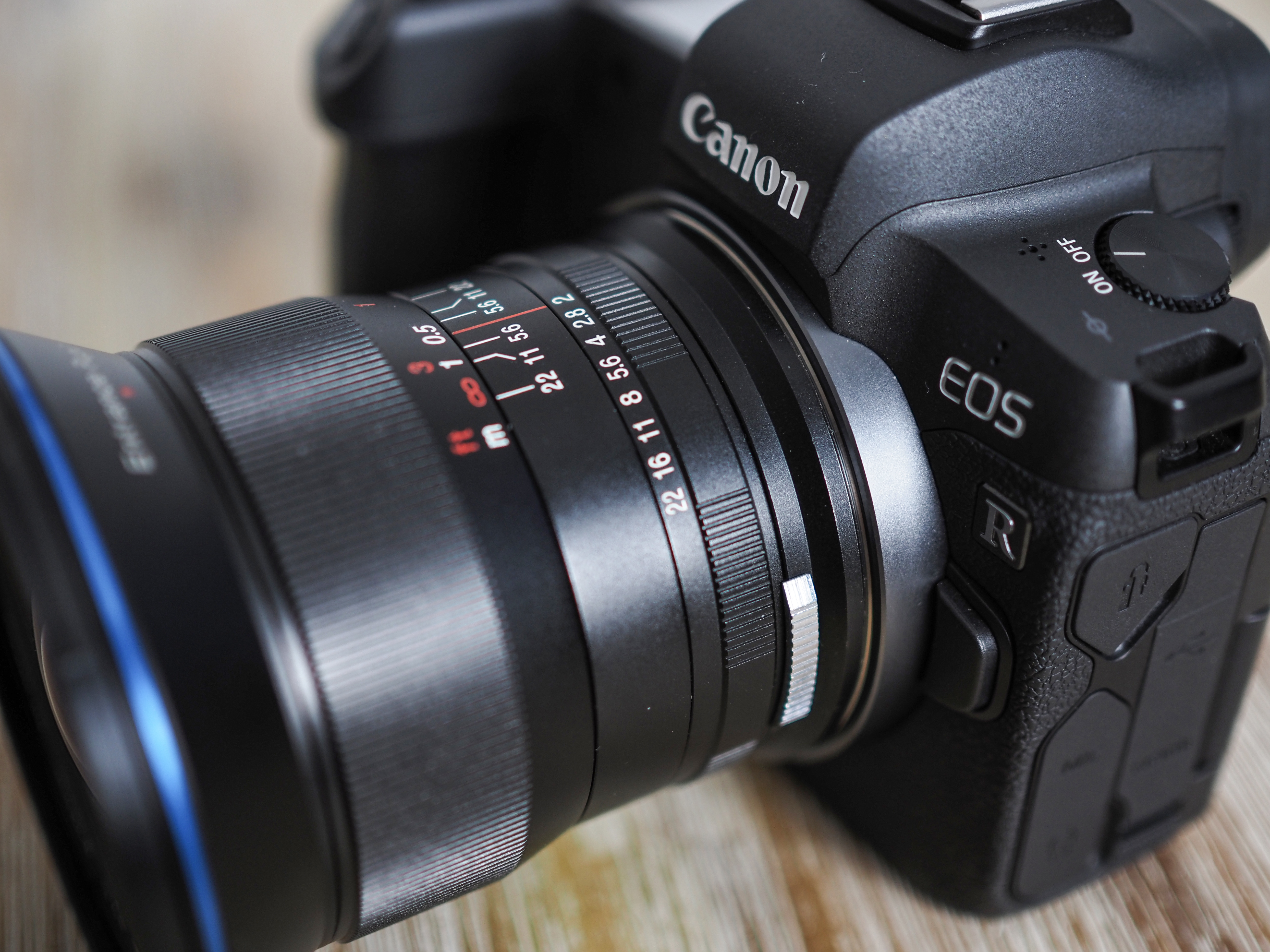
Build & handling
The Laowa 15mm f/2 Zero-D is both a pleasingly compact and an impressively sturdy lens, and it balances very well with our Canon EOS R test body. It feels substantial without being bulky or heavy, with solid metal construction that will withstand a few knocks.
While it possesses a Frog Eye Coating on the front element, to repel water and dust, it's not a weather-sealed lens, meaning that you'll need to be somewhat careful when shooting out in the elements – though in a light shower during our testing, the coating seemed to do a good job of not letting raindrops well up.
It's also a fully manual lens, meaning that there is no autofocus and no electrical contacts – so if you rely on automatic focus and exposure, you'll need to do some thinking on your feet. Again, though, that's where pairing this lens with a mirrorless body works so well, enabling you to see your live exposure and make use of assists such as focus peaking.
The focus ring is smooth and well damped, enabling precision operation without the worry of nudging it out of focus if you happen to brush it with an errant hand. Likewise the aperture ring is suitably tactile, and the ability to instantly de-click (and re-click) it makes it a joy to use for video.

Performance
The Laowa 15mm performed well in the field and was a joy to shoot with. While the distance scale shouldn't be taken as gospel when it comes to working out depth of field, this is very much an "f/8 and be there" lens if you focus to infinity thanks to the increased depth of field of such an extreme wide-angle.
With a significant throw on the focus ring, you really do have pinpoint control over focus when you need it – and again, mirrorless aids like magnification and focus peaking really help when framing up.
Images do exhibit vignetting, as you'd expect of a lens with this kind of curvature, but that's an optical inevitability of physics rather than any real shortcoming on the part of the design – and it's nothing that a couple of clicks in Photoshop can't fix.
While its obvious applications are in landscape and architecture, the Laowa 15mm is a formidable street photography and travel lens. The ability to push right in close to subjects, or to pull right out to get a near-fisheye view of a scene, makes it something that begs to put to creative use – and again, that f/2 aperture on a lens this wide makes it so much more pleasant and practical to use.
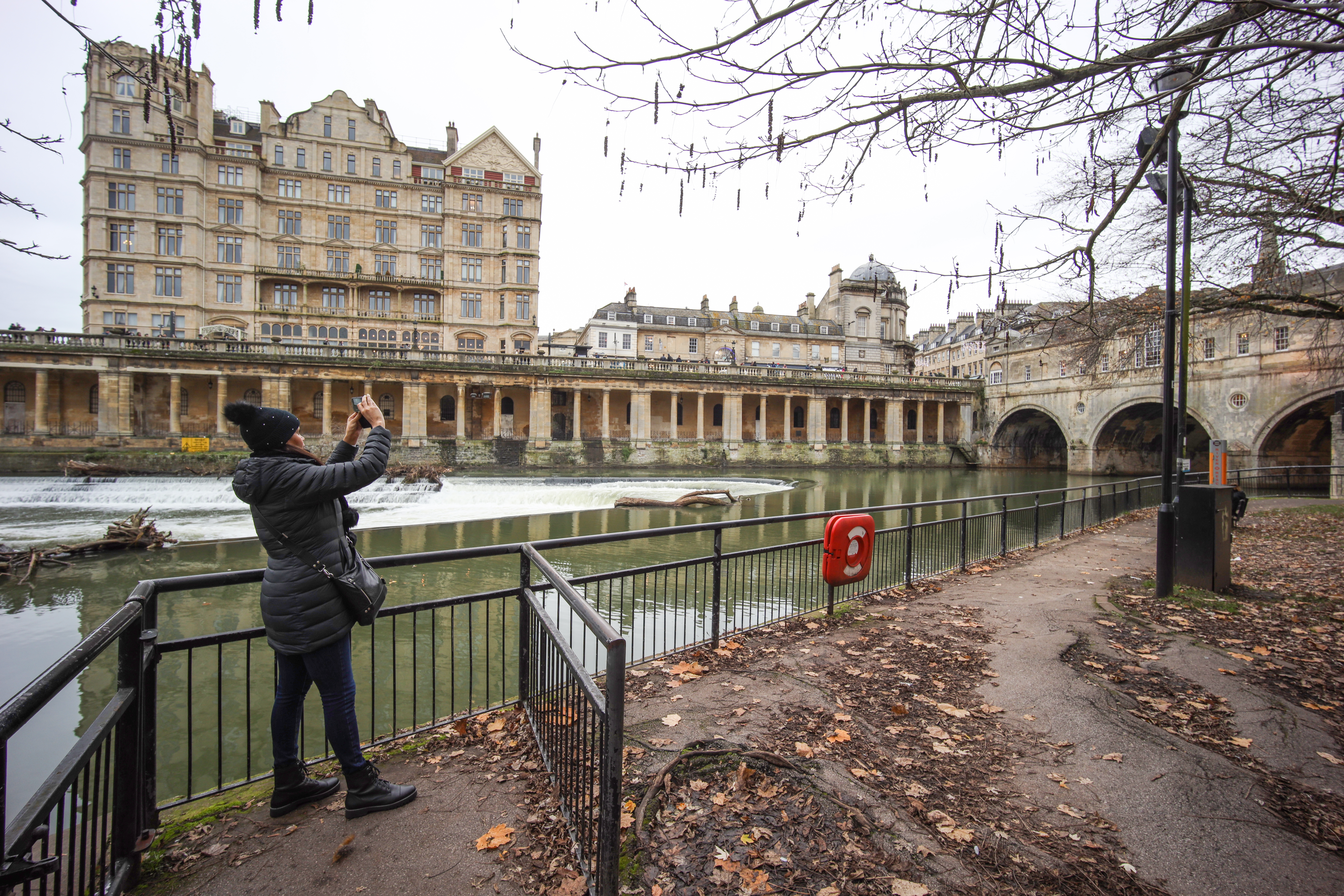
Lab data
We run a range of lab tests under controlled conditions, using the Imatest Master testing suite. Photos of test charts are taken across the range of apertures and zooms (where available), then analyzed for sharpness, distortion, and chromatic aberrations.
We use Imatest SFR (spatial frequency response) charts and analysis software to plot lens resolution at the center of the image frame, corners, and mid-point distances, across the range of aperture settings and, with zoom lenses, at four different focal lengths. The tests also measure distortion and color fringing (chromatic aberration).
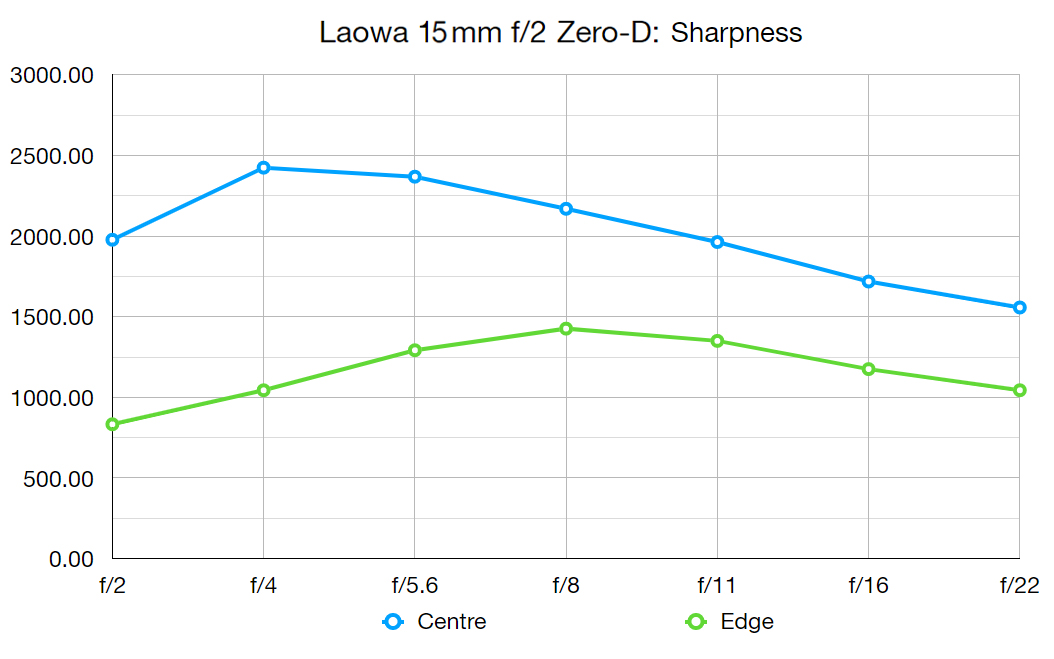
Sharpness
We measure sharpness in terms of line widths per picture height; for context, a score approaching 2,000 is considered very good. The Laowa 15mm's center-frame sharpness is therefore outstanding, right from f/2 through to f/11.
Corner sharpness appears soft by comparison, however we test lenses using a flat test chart, so when shooting an ultra-wide lens, the distance between the lens and the corners of the chart is significantly greater than the distance to the center of the chart. Combine this with the shallow depth of field available at larger apertures and it's inevitable that an ultra-wide lens will struggle to produce high corner sharpness scores. In real-world shooting, images captured with the Laowa 15mm are much sharper in the corners than these scores suggest.
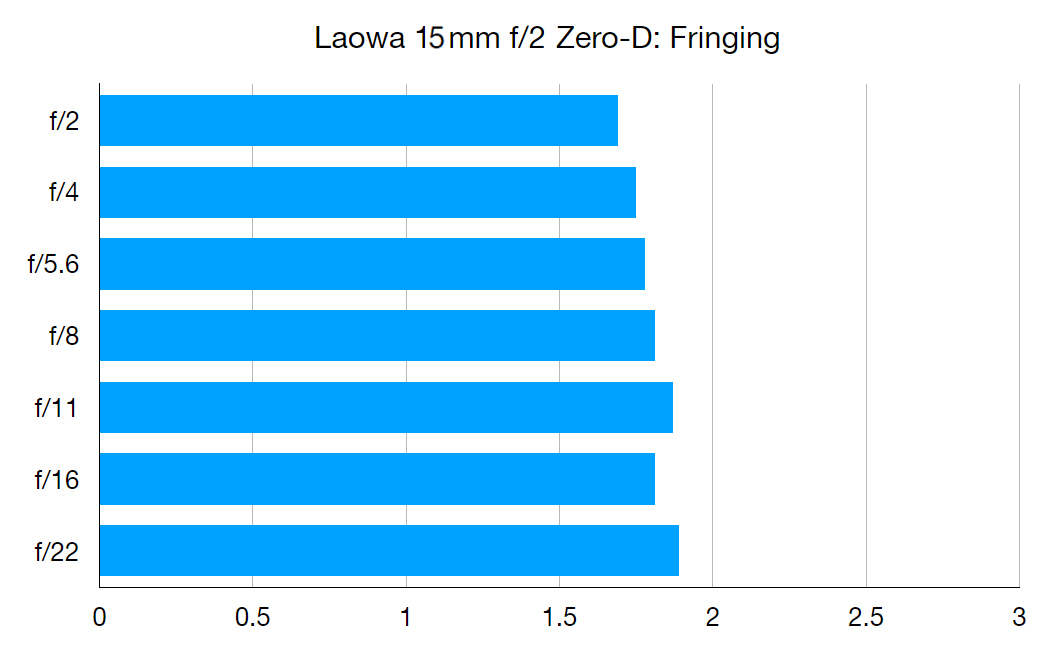
Fringing
Chromatic aberration, visible as purple fringing highlighting high-contrast boundaries in an image, is an optical phenomenon that affects all camera lenses. Ultra-wide optics are particularly prone to it, and it's most visible in the corners of frame.
Lower scores are better here, and a score below 1 indicates fringing will be barely visible in a real-world image. The Laowa 15mm manages between 1.5 and 2 at all apertures, though this is a worst-case scenario with the scores measuring fringing where it's most visible – at the corners. Even then, the Laowa's level of fringing isn't distracting and should only be noticeable under close scrutiny.
Distortion: -0.72
Laowa claims that its Zero-D lenses produce zero distortion. Our distortion measurement isn't quite a perfect zero, and indeed slight barrel distortion is visible when shooting our lens testing chart, but a score of less than 1 is still highly impressive for such a wide lens. Unless you're particularly fond of shooting geometric charts or brick walls, distortion won't be an issue with the Laowa 15mm.

Verdict
The Laowa 15mm f/2 Zero-D is an easy recommendation. It offers enviable image quality with an even more enviable aperture – and its distortion control makes it suitable for professional architectural work.
It beats competing lenses in terms of price and holds its own against them in performance, arguably exceeding them in terms of the applications made possible by the aperture speed. Its compact size also makes it a genuine street photography option, which isn't something that can really be said of the Canon EF 11-24mm F/4L USM and its ilk.
If you want to shoot this wide and this fast, the Laowa 15mm is a no-brainer – especially for anyone who shoots video as well as stills.
Read more:
Best wide-angle lenses for Canon: which one should you buy?
Landscape photography composition: fill the frame with a wide angle lens
Venus Optics brings trio of exotic f/2.8 primes to Canon RF and Nikon Z

James has 22 years experience as a journalist, serving as editor of Digital Camera World for 6 of them. He started working in the photography industry in 2014, product testing and shooting ad campaigns for Olympus, as well as clients like Aston Martin Racing, Elinchrom and L'Oréal. An Olympus / OM System, Canon and Hasselblad shooter, he has a wealth of knowledge on cameras of all makes – and he loves instant cameras, too.


